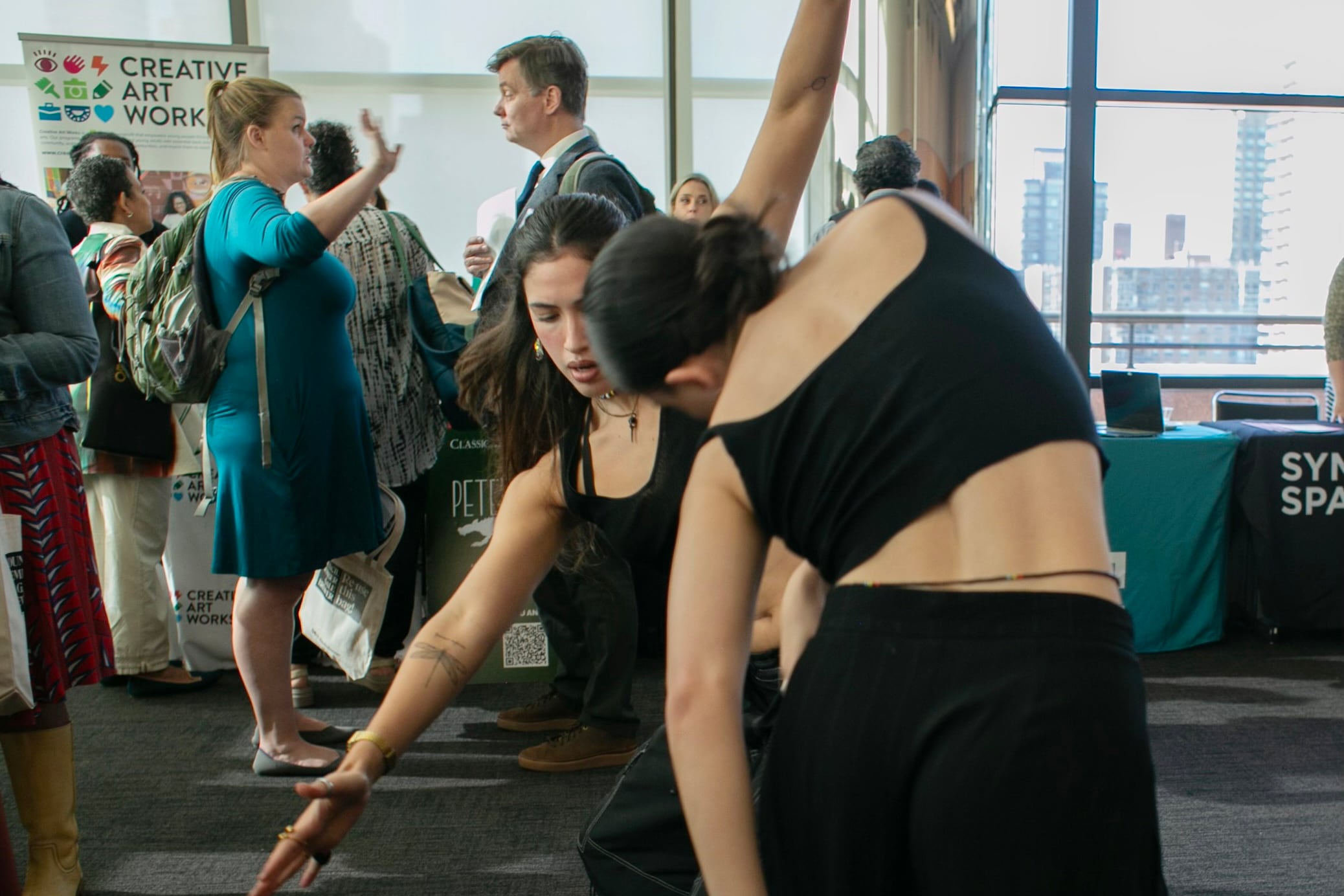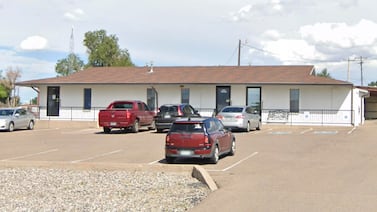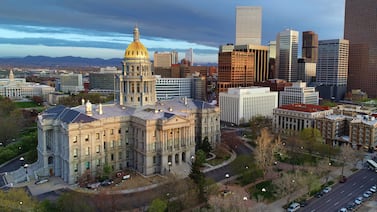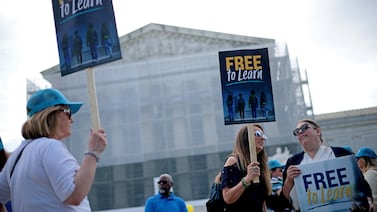Sign up for Chalkbeat New York’s free daily newsletter to keep up with NYC’s public schools.
Dozens of cultural arts organizations flocked to Lincoln Center on Tuesday, joining elected officials and educators for a celebration of arts education in the city’s schools — replete with a performance by dancers from the Juilliard School.
It was the second “Arts & Culture in the Schools Showcase,” held by Manhattan Council member Gale Brewer, aimed at promoting connections between local schools and cultural arts organizations.
The showcase comes at a time of heightened concern over the state of the city’s arts education.
In recent years, students, advocates, and elected officials have pushed for the city to provide more funding for arts programming in schools. Meanwhile, critics of a state law mandating smaller class sizes have argued it could push schools to convert dance, music, and art studios into classrooms — as the city works to bring tens of thousands of classrooms below the legal limit over the next few years.
And though City Council members reached a budget agreement with Mayor Eric Adams last year that restored more than $40 million in arts education funding that was previously propped up by expiring federal relief dollars — in addition to more than $50 million to cultural institutions — city data shows stubborn gaps persisting in student access to arts education.
“Nobody needs more money than schools and the arts,” Brewer said at the Tuesday event. “Those are the backbone of New York City.”
Middle school students are required by the state’s Education Department to complete two or more semesters of arts instruction across two different disciplines taught by certified teachers by the time they enter high school. But many schools in New York City are failing to meet that requirement, with just 36% of local students doing so in the 2022-23 school year, according to a city report.
That represented a slight uptick from the year before, but still fell well below the state mandate.
Though a majority of public schools offered instruction in visual arts and music in the 2022-23 school year, less than half of the city’s middle and high schools offered dance and theater instruction — with figures falling to as low as 21% for high schools that taught dance. As of the same year, there were roughly 2,400 full-time certified arts teachers, as well as about 800 part-time teachers, employed across the public school system, according to city surveys.
“We’re going to continue to fight and push for more funding,” said Laurie Cumbo, commissioner of the city’s Department of Cultural Affairs. “We want to see art teachers in every single school in New York City. That’s really the ultimate goal.”
More than 50 nonprofit arts organizations attended the Tuesday showcase, ranging from music to performing and visual arts to computer programming. Citywide, more than 600 cultural arts organizations partnered with public schools in the 2022-23 school year, with a majority of those partnerships occurring in elementary schools, according to a city report.
Jada Foster, the program manager of Lambda Literary’s LGBTQ Writers in Schools program, said her organization has facilitated local school visits from a range of LGBTQ authors, including Roya Marsh, Mark Oshiro, and Maulik Pancholy.
The program has partnered with roughly 180 schools across the five boroughs, running writing workshops for K-12 students and providing a safe space for students to discuss books that address issues of homophobia, racism, sexism, and more. It’s a program that’s become especially important in the wake of book challenges in schools and libraries across the country, which have largely targeted stories written by LGBTQ authors, she said.
“We always want to invite educators in, and encourage educators who want that inclusive curriculum to apply to our program,” Foster said. “With the rise of book bannings, this is a program that will provide students that necessary space.”
Lulu Fogarty, the director of education at Symphony Space, said the cultural education organization has partnered with schools for roughly 40 years, educating students from prekindergarten through high school on traditional cultural art forms.
“If a school is studying Latin America, for instance, we have a series where we’ll send in a group that does folk dances from Mexico, there’s going to be a samba music from Brazil class, there’s an Afro-Latin Jazz workshop, there’s a capoeira workshop,” she said. “Along with that series, there’s a field trip opportunity, so students can come to our theater at Symphony Space to see their teaching artists perform live on stage.”
Symphony Space partners with more than 50 schools in the city, serving about 15,000 students each year, Fogarty said.
Meanwhile, New York City Children’s Theater partners with both schools and shelters to help students adapt stories into theater performances, said Yvonne Roen, the organization’s director of development. The program invites students to participate in multiple languages, an aspect Roen said has been particularly helpful in recent years, as the city has seen an influx of asylum-seeking and other migrant students.
“When students are working together and building a play, they suddenly see something about a classmate that they’ve never seen before, because this person is speaking their own language — they’re having their own experience and that forms a bridging of the classroom,” she said. “It also gives students an opportunity to present themselves in a way that they don’t normally get to be in a classroom.”
Before the pandemic, NYCCT worked across more than 30 shelter sites in partnership with the city’s Education Department, said Frank Ruiz, the organization’s education program manager. But after losing funding in 2021, their work in shelters was limited to just two sites, Roen added.
Three years later, with funding cobbled together from City Council and various foundations, NYCCT has partnered with 11 shelters, in addition to more than 40 schools.
“As long as we get the funding, we’re going to keep expanding it, because it’s really important,” Roen said. “We really believe that everyone has a story to tell.”
Julian Shen-Berro is a reporter covering New York City. Contact him at jshen-berro@chalkbeat.org.





